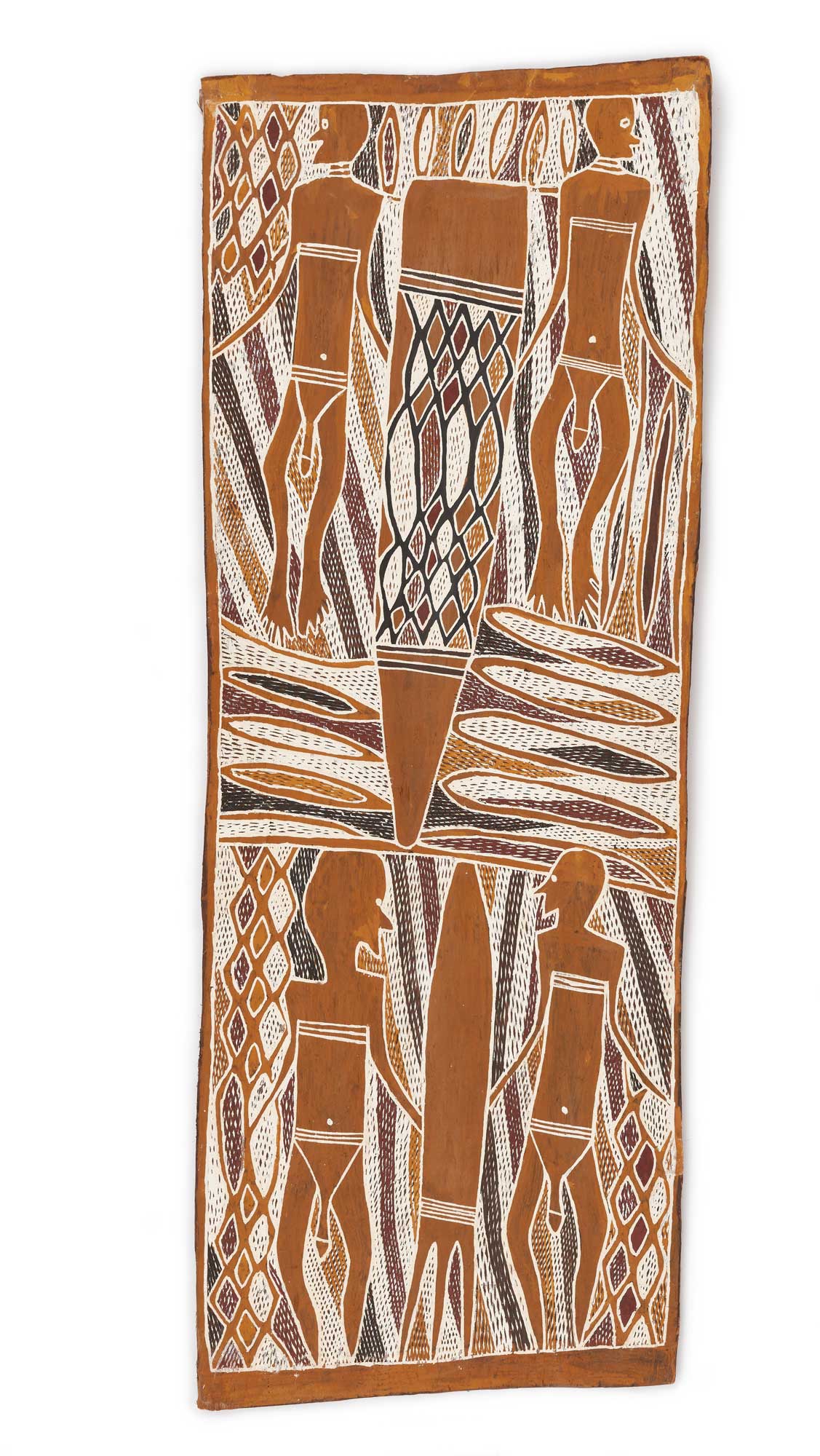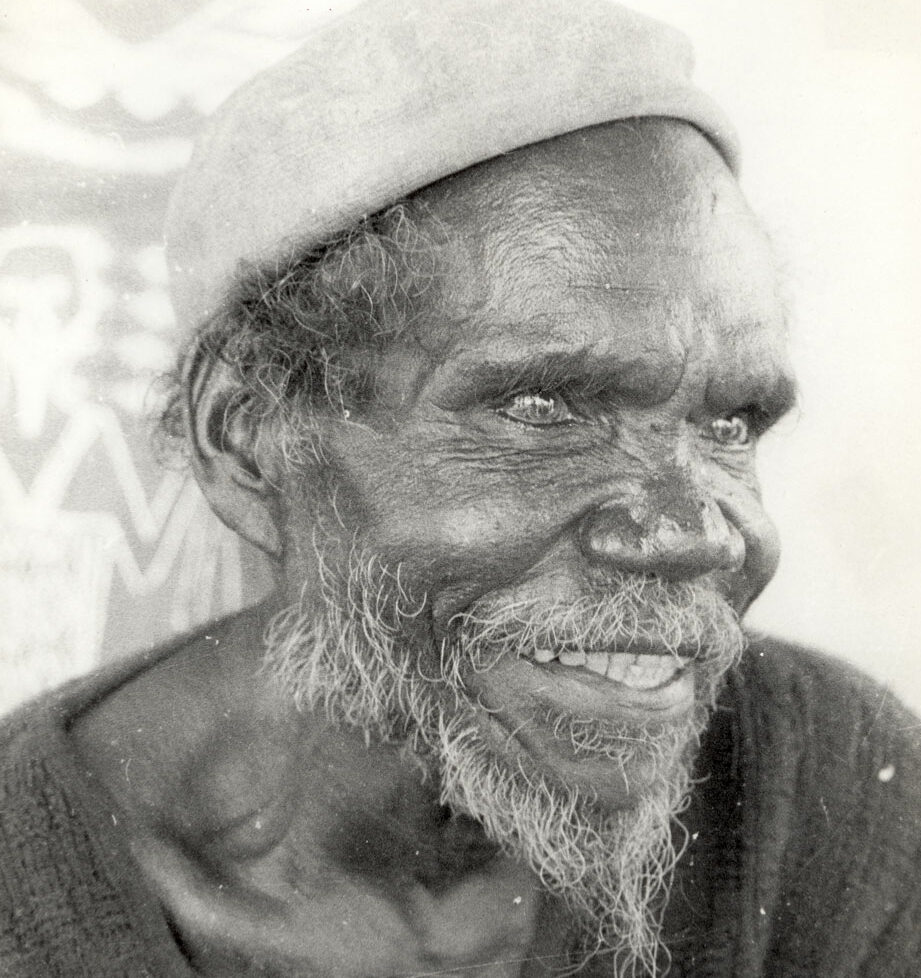
"There were three ancestral beings: Barama, Ḻany’tjuŋ and Galparrimun. Barama came from the place called Mulkanayŋu, near Gäṉgaṉ. There he created the Law. He was lying down in that place and he told the other two ancestral beings the Law, and instructed them that Ḻany’tjuŋ must journey upwards (north) and Galparrimun must travel downwards (south) sharing this Law with all the Yirrtja clans.
Barama stayed lying down there, chanting, when his clan speared him. He came out from that place wearing sacred armbands on his upper-arms. As he came out he chanted “Here I am. Here I am," and lay on the ground, wearing his sacred armbands. He chanted to all of the different clans as he went into the water, waist deep, and stepped on the white clay beneath the waters at Gäṉgaṉ. As he went into water he transformed into a tree.
This is a story that we have never told. We have only listened to our elders telling the story. My fathers and also my fathers’ fathers told us this story, and now this Law is shared by all the Yirritja clans, telling how Barama called out, identifying himself and his Law. And this is the story we must tell you and this is how it must be told. "
– YINIMALA GUMANA
Additional Information
Decade
Before 1965
Medium
Natural pigments on eucalyptus bark
Dimensions (IN)
40 7/8 x 15 5/8
Dimensions (CM)
103.8 x 39.7
Credit
Kluge-Ruhe Aboriginal Art Collection of the University of Virginia. Edward L. Ruhe Collection. Gift of John W. Kluge, 1997. 1993.0004.852.
Narrative
Dhaḻwaŋu
The Dhaḻwaŋu clan belongs to the Yirritja moiety. The most important Dhaḻwaŋu songlines relate to...
Songline
Barama and Lany’tjung
There were three ancestral beings: Barama, Lany’tjun and Galparrimun. Barama came from the place called...
Location
1960s
The 1960s were a decade of tumult and triumph for Yolŋu art and artists. In...
About The Artist(s)

Clan
Dhaḻwaŋu
Artist Dates
c.1898–1983
Alternative Names
Birigidji, Birigiji, Birikitji, Birrigidji, Birrikidji, Birrkidji
Birrikitji Gumana
Birrikitji Gumana was a renowned ŋurrudawalaŋu (warrior) and a respected ceremonial leader. In 1911, he was the first to arrive at Gäṉgaṉ to discover the massacre of Yolŋu by Europeans. Birrikitji was the most senior contributor to the Yirritja side of the Yirrkala Church Panels. He gave evidence in the native title case Milirrpum vs. Nabalco, and in the late 1970s, and with his sons Gawirriṉ Gumana and Yaŋgarriny Wunuŋmurra, he reestablished Gäṉgaṉ as a homeland for the Dhaḻwaŋu people.
Collections Represented
Art Gallery of South Australia
Art Gallery of Western Australia
Berndt Museum of Anthropology, University of Western Australia
Kluge-Ruhe Aboriginal Art Collection of the University of Virginia

